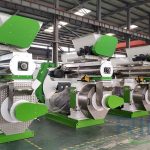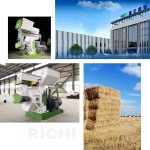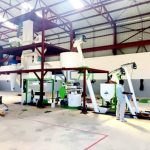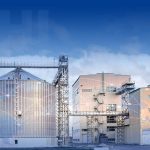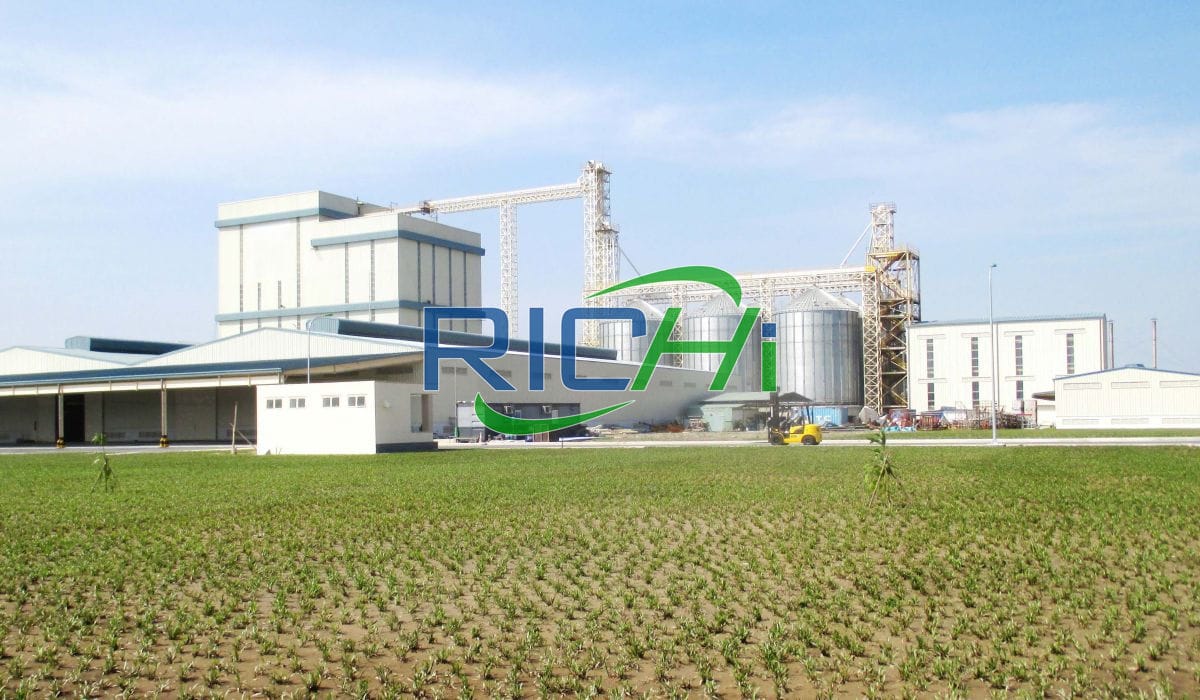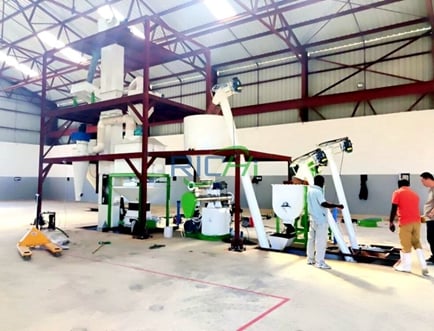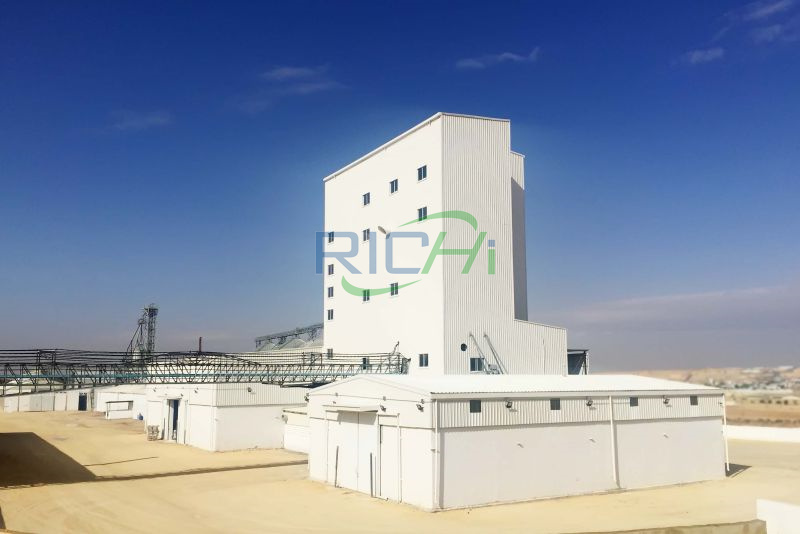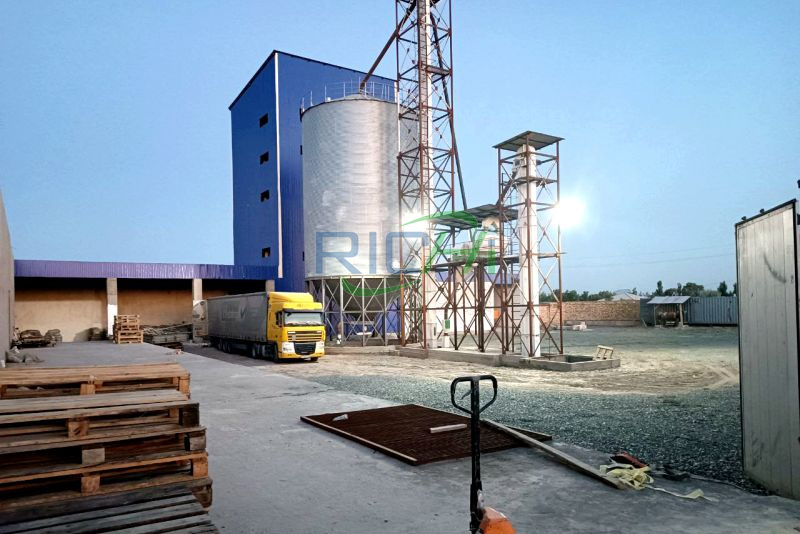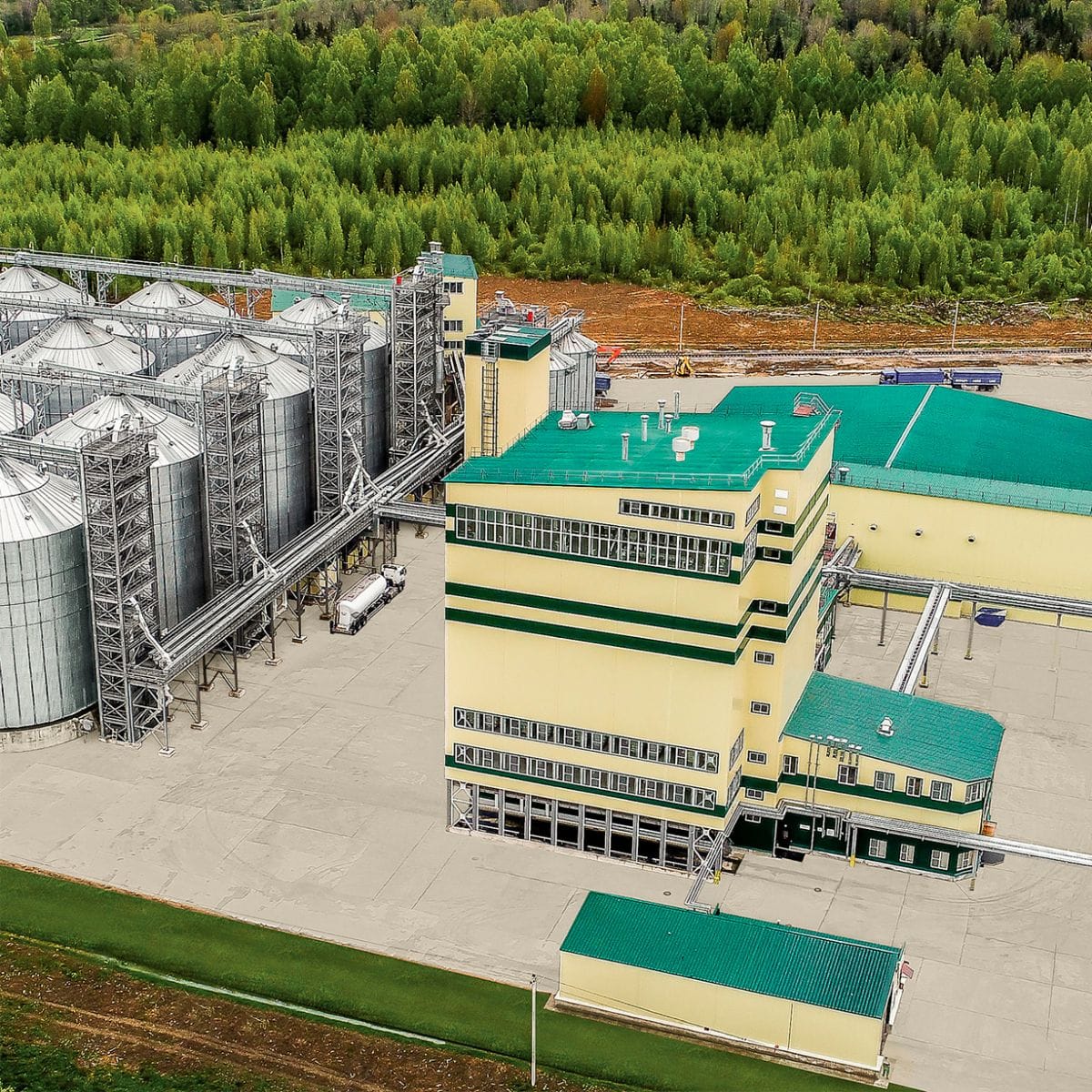Establishing a large livestock feed mill in Russia requires careful planning and investment in high-quality equipment to ensure efficient and productive operations. The Russian livestock industry has been growing steadily, creating a demand for modern, large-scale feed production facilities. This article outlines the key equipment necessary for setting up a comprehensive livestock feed mill in Russia, taking into account the country’s specific requirements and conditions.
Raw Material Handling and Storage Equipment
- Truck Unloading Systems:
- Hydraulic truck dumpers
- Receiving pits with conveyor systems
- Storage Silos:
- Large-capacity steel silos for grains and other bulk ingredients
- Smaller silos for micro-ingredients and additives
- Material Transport Systems:
- Bucket elevators
- Screw conveyors
- Belt conveyors
- Pneumatic conveying systems
These systems must be designed to handle the harsh Russian winters, with proper insulation and heating elements where necessary.
Grinding and Milling Equipment
- Hammer Mills:
- High-capacity hammer mills with various screen sizes
- Dust collection systems
- Roller Mills:
- For processing grains like corn and wheat
- Pulverizers:
- For fine grinding of certain ingredients
The grinding equipment should be robust enough to handle the variety of grains and ingredients commonly used in Russian livestock feed formulations.
Mixing and Batching Equipment
- Batch Mixers:
- Large-capacity horizontal paddle mixers
- Ribbon mixers for uniform blending
- Continuous Mixers:
- For high-volume production lines
- Liquid Addition Systems:
- For incorporating oils, molasses, and other liquid ingredients
- Micro-ingredient Scaling Systems:
- Precision scales for vitamins, minerals, and additives
- Batching Control Systems:
- Computerized batching systems for accurate formulation control
Mixing equipment should be designed for easy cleaning and maintenance, considering the importance of hygiene in feed production.
Pelleting and Extrusion Equipment
- Pellet Mills:
- High-capacity ring die pellet mills
- Die and roller assemblies suitable for various feed formulations
- Conditioners:
- Steam conditioners for optimal pellet quality
- Post-pellet conditioners for specialized feeds
- Coolers:
- Counterflow coolers for efficient pellet cooling
- Horizontal coolers for gentle handling of delicate pellets
- Crumblers:
- For producing crumbled feed for young animals
- Extruders:
- For producing floating fish feed or specialized pet foods
The pelleting equipment should be capable of producing high-quality pellets that can withstand transportation across Russia’s vast territory.
Drying and Cooling Systems
- Rotary Drum Dryers:
- For drying ingredients or final products
- Fluid Bed Dryers:
- For gentle drying of heat-sensitive ingredients
- Cooling Towers:
- For process water cooling
Efficient drying and cooling systems are crucial in Russia’s climate to ensure proper moisture content in the final feed products.
Packaging and Loadout Equipment
- Bagging Lines:
- Automatic bagging systems for various bag sizes
- Robotic palletizers
- Bulk Loadout Systems:
- Truck loading systems for bulk feed delivery
- Weighbridges for accurate load measurement
- Warehouse Management Systems:
- Automated storage and retrieval systems for bagged products
Packaging equipment should be designed to protect the feed from moisture during storage and transportation in Russia’s diverse climate conditions.
Quality Control and Laboratory Equipment
- NIR Analyzers:
- For rapid ingredient and finished product analysis
- Moisture Meters:
- For monitoring moisture content throughout the production process
- Sieve Analyzers:
- For particle size distribution analysis
- Durability Testers:
- For testing pellet quality
- Microscopes:
- For visual inspection of feed components
Investing in comprehensive quality control equipment is essential to meet Russian feed safety standards and ensure consistent product quality.
Automation and Control Systems
- Programmable Logic Controllers (PLCs):
- For automated process control
- Supervisory Control and Data Acquisition (SCADA) Systems:
- For plant-wide monitoring and control
- Manufacturing Execution Systems (MES):
- For production planning and tracking
- Enterprise Resource Planning (ERP) Software:
- For integrated business management
Advanced automation systems are crucial for efficient operation and compliance with Russian traceability requirements.
Dust Control and Safety Equipment
- Dust Collection Systems:
- Cyclones and bag filters for dust control
- Explosion Prevention Systems:
- Explosion vents and suppression systems
- Fire Detection and Suppression Systems:
- Sprinkler systems and fire alarms
Given the combustible nature of feed ingredients, robust safety systems are essential to comply with Russian safety regulations.
Utility Equipment
- Boilers:
- For steam generation in pelleting and other processes
- Air Compressors:
- For pneumatic systems and equipment operation
- Electrical Substations:
- To handle the high power requirements of a large feed mill
- Backup Generators:
- To ensure continuous operation during power outages
Reliable utility equipment is crucial, especially in remote Russian locations where power supply may be inconsistent.
Conclusion
Building a large livestock feed production line in Russia requires a significant investment in a wide range of specialized equipment. From raw material handling to final product packaging, each stage of the feed production process demands carefully selected machinery that can withstand Russia’s unique environmental and regulatory challenges.When sourcing this equipment, it’s important to consider factors such as energy efficiency, durability in harsh climates, and compliance with Russian standards and regulations.
Many international equipment manufacturers offer customized solutions for the Russian market, often with local support and service networks.Additionally, given the scale of investment, it’s advisable to work with experienced feed mill design and engineering firms that understand the specific requirements of operating in Russia. These experts can help optimize the plant layout, ensure proper integration of all equipment, and provide valuable insights into local best practices.
By carefully selecting and integrating the right equipment, a large livestock feed mill in Russia can operate efficiently, produce high-quality feed, and meet the growing demands of the country’s livestock industry. Such a facility can play a crucial role in enhancing Russia’s agricultural productivity and contributing to its food security goals.


